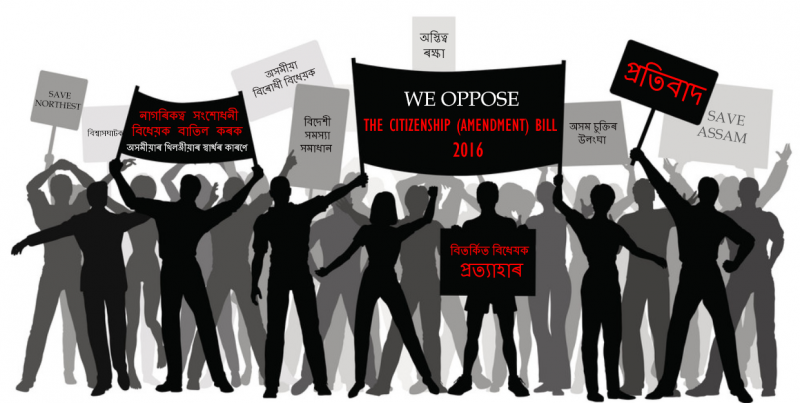As soon we conduct a simple cost benefit analysis of the CAA (and the ancillary NPA and NRC), it should be evident that no other explanation makes sense. Any law, that too one which involves every one of India’s 1.3 billion people, must necessarily pass this test of fiscal probity.
Written by Partha S Ghosh | Updated: February 7, 2020 11:23:24 am

The Narendra Modi government’s Citizenship Amendment Act (CAA), 2019 is just such a joke.
There is too much seriousness all around. I am as old as the Indian state, but I cannot recall another moment so rife with concern about the future of India. We have fought three wars with Pakistan (if Kargil is added, four), one war with China, faced innumerable internal challenges from Left extremism across the country, ethnic separatism in the Northeast and Tamil Nadu, even an Emergency. But never have we felt so afraid about the territorial and social integrity of the country. We seem to be infested with the microbes of tukde tukde , Urban Naxals and anti-nationals, who continue to multiply geometrically, as all bacilli do.
Hindus are worried that even “1,000 years of Muslim rule” pale against the danger posed by India’s 14-per cent-strong impoverished and demoralised Muslim minority. Muslims are worried that they will soon be thrown into Pakistan, which they rejected in 1947. Even if they dodge that possibility, RSS chief Mohan Bhagwat’s “innocent” theorisation will see to it that they call themselves Hindus. Christians are worried that Donald “Jesus” Trump will start another World War. Buddhists, observing the behaviour of their co-religionists in Myanmar and Sri Lanka, are left wondering about Lord Buddha’s sermons about peace and non-violence. In short, everyone is concerned.
Against this background, if someone comes up with a joke that makes us laugh, my kudos to them. The Narendra Modi government’s Citizenship Amendment Act (CAA), 2019 is just such a joke. If there is a Nobel for jokes, we have found India’s entry. The only fear is of disqualification: It is, we must admit, a PJ (poor joke). After all, one does not even need to read the details of the Act (though I would advise everyone to), to know that its central purpose is crystal clear: How to earn political (actually electoral) brownie points from the vast number of Hindus, the BJP’s vote bank.
Now that the BJP has exhausted almost all weapons in its arsenals (Article 370 is abolished; triple talaq has been criminalised; the Ram Temple seems to be coming soon), it must invent something new to keep distracting its hard core supporters. As soon we conduct a simple cost benefit analysis of the CAA (and the ancillary NPA and NRC), it should be evident that no other explanation makes sense. Any law, that too one which involves every one of India’s 1.3 billion people (excluding some communities in NE), must necessarily pass this test of fiscal probity. Indeed, such a test must precede deliberations over theories of international migration and the question of refugees (on which reams have been written, including many that address the Partition of the Subcontinent and its aftermath).
We can estimate the cost of the national exercise by extrapolating from NRC expenditures in Assam. To register Assam’s 3.3 crore people, the NRC cost Rs 1,600 crore and involved a work force of 50,000 officials. The estimated population of India in 2019 was 137 crore. A nation-wide CAA/NPA/NRC would thus cost Rs 66,424 crore ($9.5 billion) and involve just under 21 lakh officials. Now, add to this the huge cost in terms of money and time that millions of Indians will bear preparing documents, standing in line, returning with additional documents, and appealing against bureaucratic mistakes. Add to it the money needed to build and maintain thousands of detention centres necessary to house the roughly eight crore stateless persons likely to be so identified (extrapolating the Assam NRC’s 19 lakh “non-Indians”).
Now comes the political question. By now it is clear that 75 per cent of the so-called stateless in Assam are non-Muslims who will be granted citizenship through the CAA. That leaves about five-lakh Muslims, who are to be “de-Indianised”. Extrapolating to West Bengal, which matters most in the immediate electoral context, we arrive at about 15-lakh Muslims. Now, think over it: Just to label approximately 20 lakh Muslims in Assam and Bengal as “non-Indians”, 137 crore Indians will have to show their papers. To victimise one person, 700 others will be terrorised. Varun Grover makes enormous sense when he sings, hum kaagaz nahi dikhayenge(we will not show you our papers). If you still think that the CAA is not a joke, I pity your sense of humour.
This article first appeared in the print edition on February 7, 2020 under the title ‘Numbers don’t lie’. The writer is senior fellow, Institute of Social Sciences, New Delhi and formerly, ICSSR Natonal Fellow, and professor of South Asian Studies, JNU.

Leave a Reply